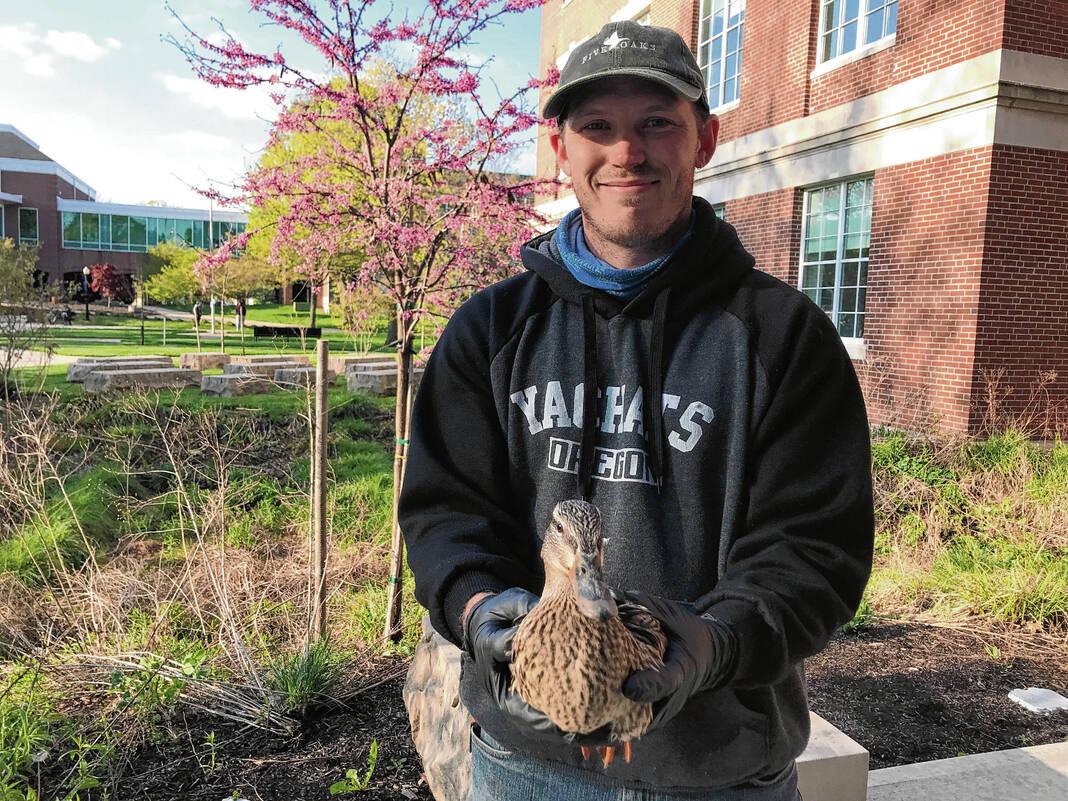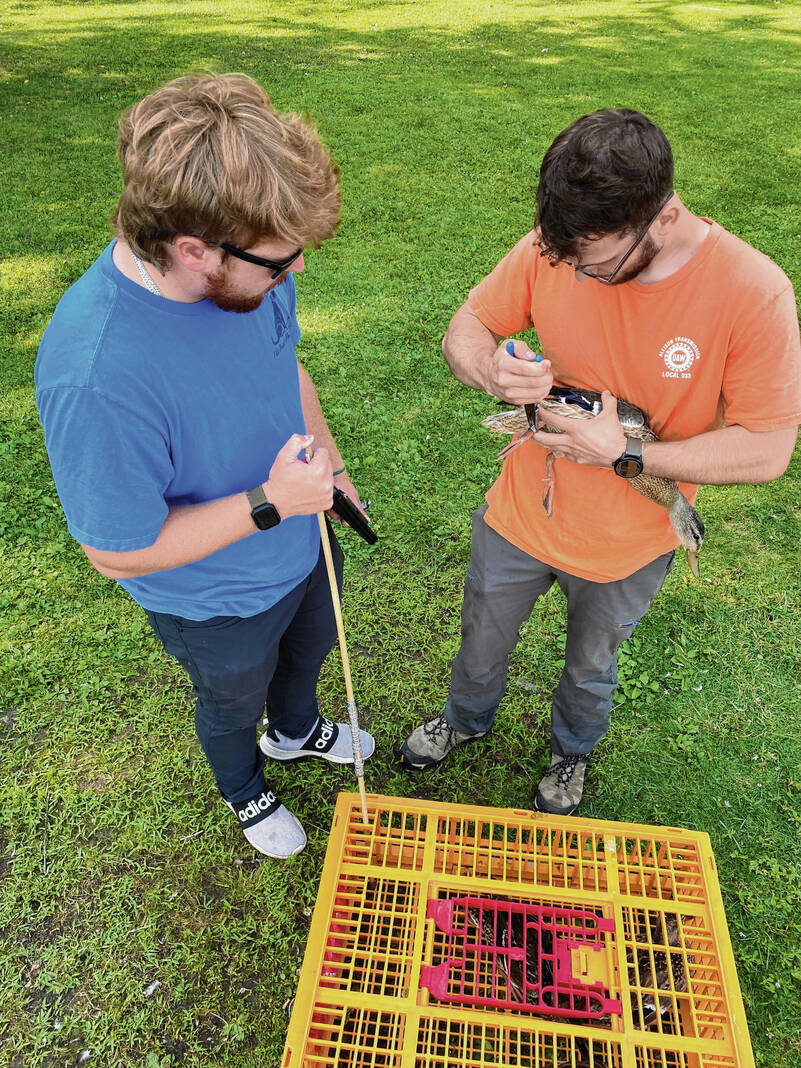These days, mallards can commonly be found near retention ponds in suburban neighborhoods.
It isn’t their natural habitat, but they’ve become more and more familiar with it as previously rural land gets developed and the number of wetlands decreases. The change in surroundings has also accompanied a decrease in the mallard population in the Great Lakes region. From 1995 to 2023, the population of mallards in the Great Lakes region shrank from more than 500,000 birds to less than 140,000, according to Great Lakes Now, a news service owned by PBS.
Ben O’Neal, a Franklin College biology professor, is nearing the end of a study that will outline some of the causes of the decrease and how the population can rebound. The study, “Great Lakes mallard movements, habitat selection, survival, and productivity,” had its first phase in Illinois and Indiana in 2018, and the most recent phase, which started in 2021, also includes Michigan, Wisconsin and Ohio, O’Neal said.
The study was funded by a $300,000 grant through Pittman-Robertson funds, generated from hunters’ and anglers’ equipment purchases, he said.
“What interests me in the mallards is they are really a significant species for the wetland system and they provide an indicator of the health of that system. They’re also really important because they’re abundant. They play a critical role as a member of the wildlife communities that live in the wetlands,” he said. “As ecologists, it causes us to say ‘why are they declining?’ What is changing in the system and is there anything we can do from a management point so they’re sustained and don’t continue that decline?”
O’Neal has enlisted the help of Franklin College students for the Indiana portion of the project, working with students from other schools, such as Ball State University. Those students have helped study mallards from Franklin to as far north as South Bend. With permits from the Indiana Department of Natural Resources, students have spent time catching mallards, attaching GPS trackers to them and releasing them, using a technology called satellite telemetry, O’Neal said.
With the technology, researchers can track the movement of the birds using orbiting satellites that detect the signals from the transmitters, according to Smithsonian’s National Zoo & Conservation Biology Institute.
“We track migratory patterns and behavioral patterns, like do they nest once or twice a year? We know once a year we catch them in the spring, and then it’s really important what kinds of habitats they are using at different times of year. The most critical thing, one of our hypotheses is changes to landscapes is changing the ways animals use their habitat,” O’Neal said. “Rather than just speculating that they’re doing this or that with their habitat selection, this technology allows us to (see) that.”
Tyler Wick, who graduated from Franklin College in May with a degree in biology with a concentration in ecology and conservation, has been working on the project since April of 2021. O’Neal became Wick’s advisor when he was a student, which helped spur his interest in wildlife. Now, he wants to pursue a master’s degree related to waterfowl biology and ecology, Wick said.
“What made me get into waterfowl was studying their behaviors and the environments they’re in and the way they interact with the other animals around them,” he said. “It’s intriguing to me and sold me on it, that way of studying their ecology and the way they interact with their surroundings. One thing most people don’t know is how many predators live in our neighborhoods, like foxes, raccoons and skunks. It’s really cool to see the interaction between neighborhood predators and mallards.”
In northern Indiana, Wick studied the birds’ behavior around lakes, which are plentiful there, while in central Indiana, his studies mostly revolved around retention ponds, he said.
“In northern Indiana, especially where there are more abundant lakes, they’re more skittish, discreet and harder to catch compared to central Indiana urban neighborhood mallards,” Wick said. “People (here) feed neighborhood ducks and they’re close to humans.”
The study won’t conclude until June 30, 2024, but Wick has some theories on possible reasons the mallard population is declining.
“There’s nothing I could say with 100% confidence, but I think a factor could be the avian flu, the increase in domestic ducks mixing with the wild population and a big one for a lot of ducks is the loss of habitat, especially for wild mallards. They do experience habitat loss with the decrease in wetlands and marshes,” Wick said.
Researchers across the five states involved in the project have put more than 500 trackers on mallards, including about 75 in Indiana, O’Neal said.
“Those tracking devices are gathering volumes and volumes of data,” he said. “The goal is to restore the (mallard) population, build our scientific knowledge of what’s happening with this species, and restore and sustain these populations through good population management.”








